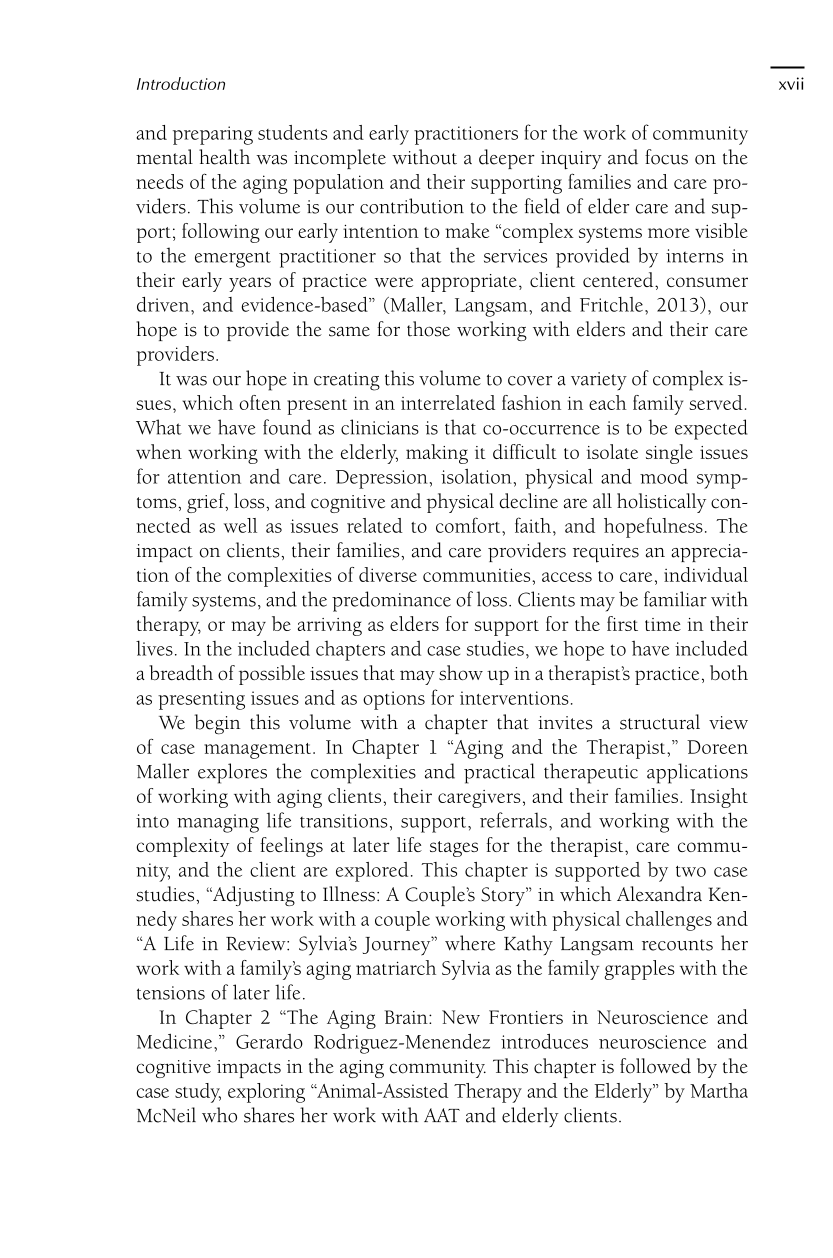Introduction xvii
and preparing students and early practitioners for the work of community
mental health was incomplete without a deeper inquiry and focus on the
needs of the aging population and their supporting families and care pro-
viders. This volume is our contribution to the field of elder care and sup-
port; following our early intention to make “complex systems more visible
to the emergent practitioner so that the services provided by interns in
their early years of practice were appropriate, client centered, consumer
driven, and evidence-based” (Maller, Langsam, and Fritchle, 2013), our
hope is to provide the same for those working with elders and their care
providers.
It was our hope in creating this volume to cover a variety of complex is-
sues, which often present in an interrelated fashion in each family served.
What we have found as clinicians is that co-occurrence is to be expected
when working with the elderly, making it difficult to isolate single issues
for attention and care. Depression, isolation, physical and mood symp-
toms, grief, loss, and cognitive and physical decline are all holistically con-
nected as well as issues related to comfort, faith, and hopefulness. The
impact on clients, their families, and care providers requires an apprecia-
tion of the complexities of diverse communities, access to care, individual
family systems, and the predominance of loss. Clients may be familiar with
therapy, or may be arriving as elders for support for the first time in their
lives. In the included chapters and case studies, we hope to have included
a breadth of possible issues that may show up in a therapist’s practice, both
as presenting issues and as options for interventions.
We begin this volume with a chapter that invites a structural view
of case management. In Chapter 1 “Aging and the Therapist,” Doreen
Maller explores the complexities and practical therapeutic applications
of working with aging clients, their caregivers, and their families. Insight
into managing life transitions, support, referrals, and working with the
complexity of feelings at later life stages for the therapist, care commu-
nity, and the client are explored. This chapter is supported by two case
studies, “Adjusting to Illness: A Couple’s Story” in which Alexandra Ken-
nedy shares her work with a couple working with physical challenges and
“A Life in Review: Sylvia’s Journey” where Kathy Langsam recounts her
work with a family’s aging matriarch Sylvia as the family grapples with the
tensions of later life.
In Chapter 2 “The Aging Brain: New Frontiers in Neuroscience and
Medicine,” Gerardo Rodriguez-Menendez introduces neuroscience and
cognitive impacts in the aging community. This chapter is followed by the
case study, exploring “Animal-Assisted Therapy and the Elderly” by Martha
McNeil who shares her work with AAT and elderly clients.









































































































































































































































































































